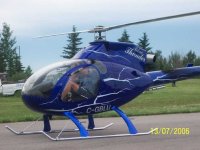Well Tom,
I'm sorry to say I retract my last post after discussion with a friend of mine, I'm now in the "it will fly category"
It doesn't matter how fast the conveyor is moving. The wheels on the plane are free spinning. Therefore, regardless of how fast the conveyor is moving, thrust from the plane will move it forward. The plane will not remain in place regardless of the speed of the conveyor. It will move forward, gain speed, and either leave the conveyor, or if the conveyor is say 4000' long, will travel the distance needed along the conveyor to gain proper air speed and take off. The only thing the conveyor will do is make the wheels spin faster at the point it leaves the ground. Looks like spark man was right clear back on post #4, I just didn't read his post close enough. I just couldn't get over the vision in my head of the plane sitting still due to the conveyor when in reality, there's no way the conveyor can keep the plane from moving forward in increasing speed just like a normal takeoff.
I'm laughing now. I bet you guys in the "it will fly" category are just getting a kick out of us in the "it will not fly" category.
jk
 We actually need to send this to mythbusters don't we?
We actually need to send this to mythbusters don't we?


